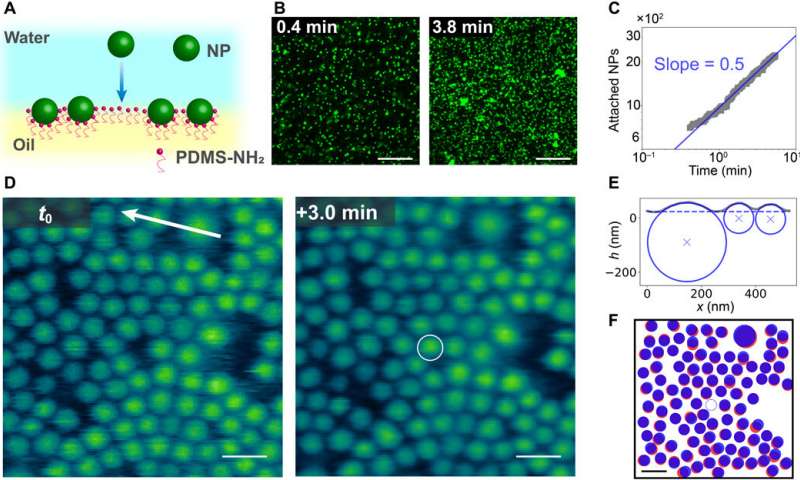The online cover of Science Advances this week
features the assembly of nanoparticle surfactants at a solid-liquid
interface using advanced microscopy techniques such as laser
scanning confocal microscopy and atomic force microscopy. Materials
scientists had explored the assembly of solids at a liquid
interface for decades to understand ore (a complex and stable
chemical compound) purification, emulsion and encapsulation
processes. In a new report, Yu Chai and a research team at the
Lawrence Berkeley National Laboratory, University of California
Berkeley, the Hong Kong Polytechnic University and the Tohoku
University, in the U.S., China and Japan, showed how electrostatic
interactions between nanoparticles and ligands formed nanoparticle
surfactants at water-oil interfaces. The resulting ‘jammed’
structures produced a solid-like layer. When the area density of
the nanoparticle surfactants increased at the interface, further
attachment required cooperative displacement of previously
assembled nanoparticle surfactants. The high space-time resolution
of their observations revealed the complex mechanism of attachment
and the nature of nanoparticle assembly.



